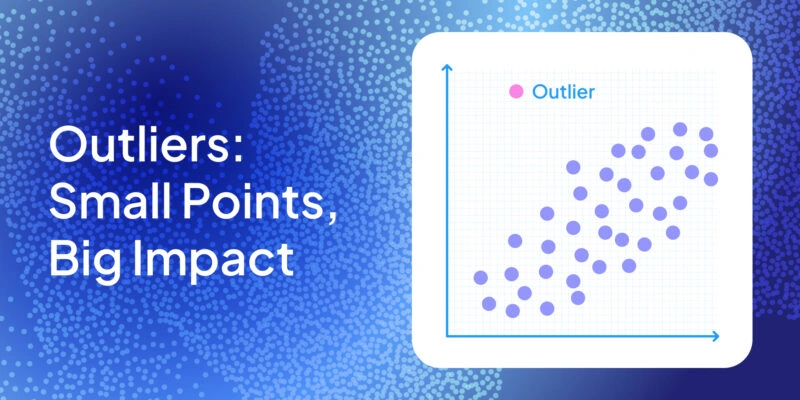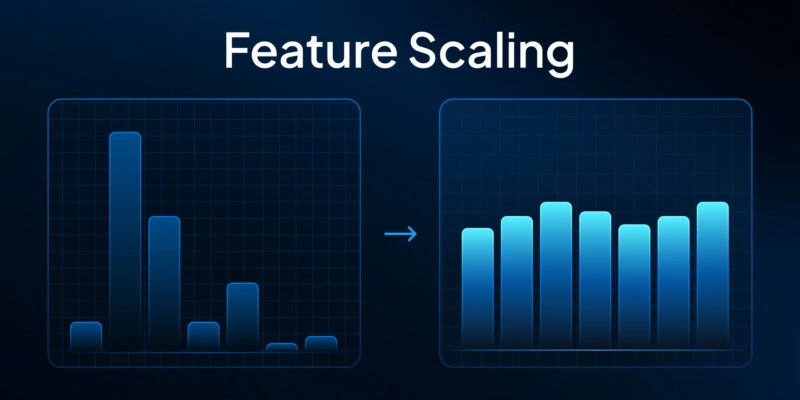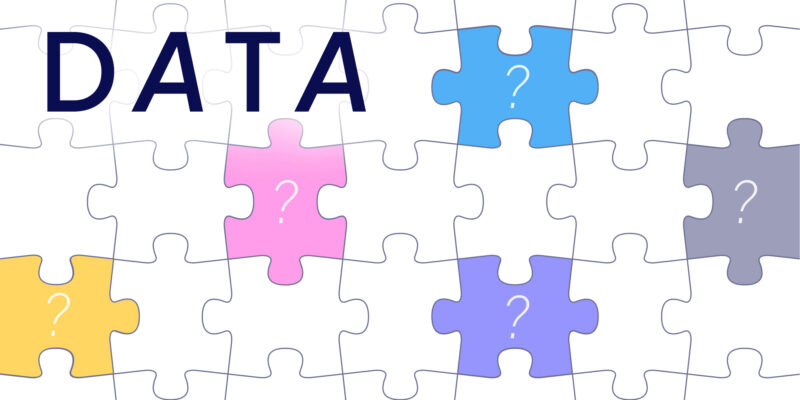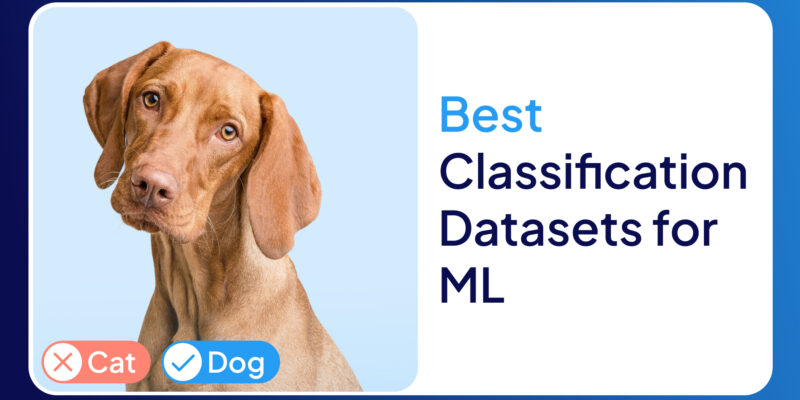
What Is Sentiment Analysis?
Ever overheard someone arguing passionately about pineapple on pizza? That's sentiment analysis right there, in its most natural form — judging if the vibes are positive, negative, or mixed.
In tech terms, sentiment analysis is a subfield of Natural Language Processing (NLP) that helps machines detect emotion or opinion in text. Whether it’s tweets, customer reviews, or support chats, it turns raw language into something measurable — and actionable.
Now imagine harnessing that skill at scale, across millions of data points. Pretty powerful, right?
Why It Matters: Business Impact, ROI & Market Trends
Ignoring customer feelings today is like ignoring a fire alarm because you're busy cooking dinner — sounds convenient until things start to burn. IDC (2024) predicts sentiment analysis will become an $8 billion industry by 2027, which is no surprise — feelings pay, literally!

Here’s why companies are racing to read customer moods better than a seasoned therapist:
Customer Insights
Ever wish customers would just tell you what they really think? Sentiment analysis is your personal crystal ball. It lets you peek directly into your customers’ minds and hearts (minus the awkwardness). You’ll know instantly if your latest ad campaign was a hit or a total miss.
Brand Safety (aka Crisis Management)
When customers get upset, they don't always send polite emails — they blast it online. Sentiment analysis helps you catch bad vibes early. You can step in, fix the problem, and show the world you actually care. That’s how strong brands stay strong.
Improved Products & Services
With sentiment analysis, customer feedback becomes crystal clear. You’ll know exactly which features people love — and which ones miss the mark. No guessing, no wasting resources. Just smarter updates that customers actually want.
More Profit (Cha-Ching!)
Let's face it: happy customers open their wallets wider and come back more often. Companies using sentiment analysis see customer satisfaction scores jump by as much as 25% (Gartner, 2023). Happy vibes mean repeat customers — and repeat customers mean more revenue.
How Sentiment Analysis Works: Methods & Architecture
Once you know why sentiment analysis matters, the next big question is: how does it actually work behind the scenes?
It starts by pulling in real-world text — tweets, reviews, chat logs, you name it. But before a model can make sense of any of it, the text needs a tune-up. That’s where preprocessing comes in.
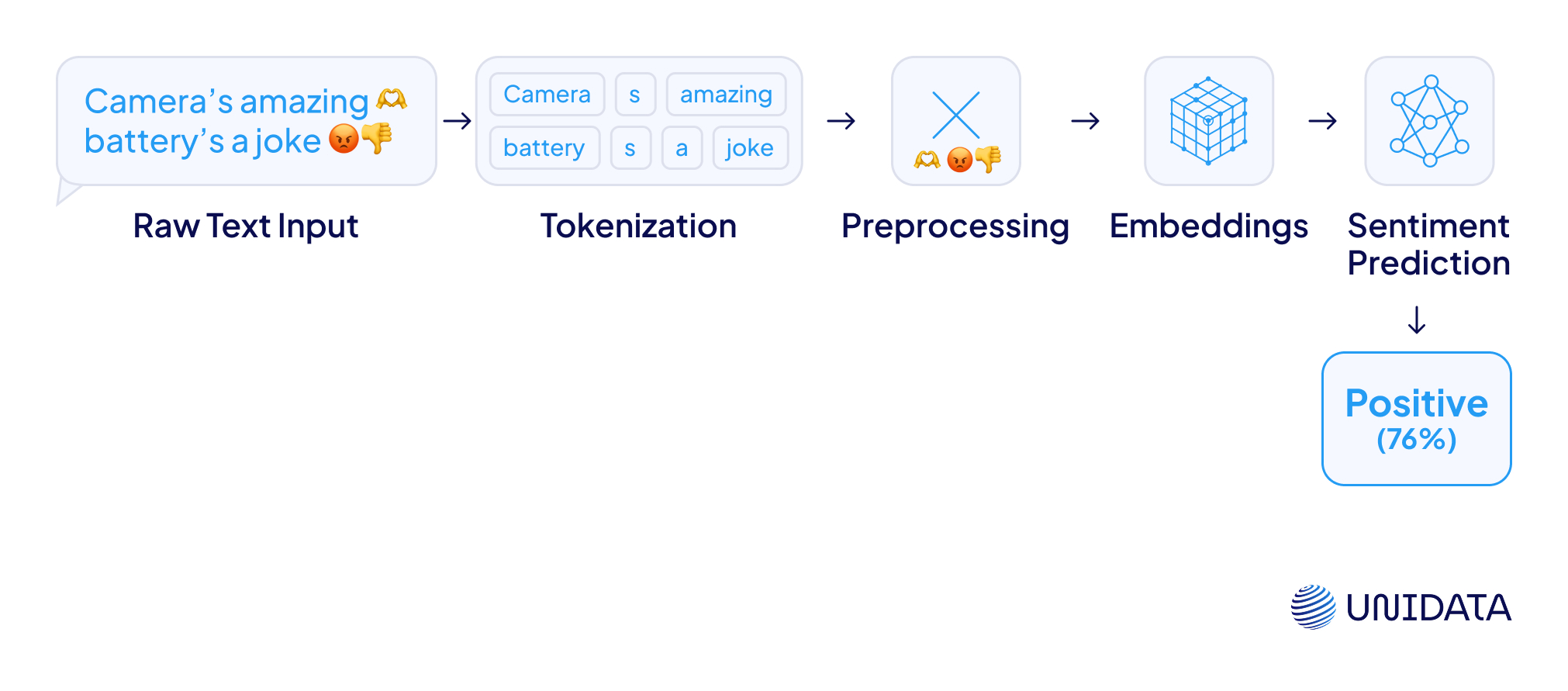
This step cleans up the input: fixing typos, normalizing punctuation and casing, filtering out stop words or emojis (or converting them into usable tokens). Then comes tokenization — splitting the text into words, subwords, or even character-level units, depending on the model’s setup. These tokens are converted into embeddings — dense vector representations that capture semantic meaning. This vectorized form is what the model actually “reads” when making predictions.
But not all sentiment systems work the same way. There are three main styles you’ll run into: rule-based, machine learning, and hybrid pipelines.
Rule-based systems follow simple instructions written by people. For example, if the text says "love" or "awesome," the system marks it as positive. These setups are easy to build and explain, but they have a major weakness — they don’t deal well with slang, sarcasm, or new ways of speaking. People are creative. Rules aren’t.
Machine learning systems are a whole different game. They learn by reading massive amounts of text where the sentiment is already labeled. Over time, they pick up patterns humans might miss.
These systems use different types of algorithms depending on the job:
Logistic Regression and Support Vector Machines (SVMs):
Great for simpler tasks where the text is structured. Fast, reliable, and easy to train when you don’t have millions of examples lying around.
Let’s walk through how the model handles a real example:
“The product arrived on time and works perfectly. Very satisfied!”
On the graph, you’ll see exactly how the system responds. A clean confidence score — the model quickly classifies the sentence as highly positive, without hesitation. You see a strong, sharp prediction close to 1.0 (positive).
Convolutional Neural Networks (CNNs):
Handy for messier texts. They’re good at picking out important phrases and spotting patterns, even when the writing is noisy or sloppy.
Now take this one: "Loveee this phone soooo much! But ugh battery could be better lol."
The graph breaks the sentence into chunks, showing how the model reacts to each part: bright yellow means very positive, red means negative, and orange means mixed or neutral. It’s a quick, color-coded snapshot of how the CNN reacts to each chunk of text.
Recurrent Neural Networks (RNNs):
Best for understanding sequences. RNNs read words in order, so they can catch tone changes, sarcasm, and subtle emotional shifts over time.
Now let’s look at: “I thought the movie would be boring at first, but by the end, I absolutely loved it.”
The graph shows how the model’s sentiment shifts as the sentence unfolds. It starts slightly negative on “boring”, then swings to strong positive by “absolutely loved it.” A rising curve captures that emotional turn — just what RNNs are built to follow.
Transformer models like BERT:
The heavy hitters. Transformers read the whole sentence at once, not word by word, and deeply understand context. They’re pros at spotting hidden emotions that simpler models often miss.
Take this example:
"Not sure if I hated the customer service more or the actual product. Either way, never again."
The graph highlights which word pairs BERT links most strongly. Thick arcs between “hated” and “product”, and “never” and “again”, anchor the negative tone. A medium arc on “customer” ↔ “service” adds context. The model lands at a clear 97% negative.
Hybrid systems mix both approaches. They use hand-written rules to catch obvious cases fast, like spotting clear positive or negative words. Then they pass the harder, fuzzier examples to machine learning models — often lightweight classifiers like Logistic Regression or heavy-hitters like BERT — depending on how complex the text is.
This way, hybrids stay fast, smart, and flexible, but they do take more time to build and tune properly.
Pro Tip: If you’re working with clean, formal text (like support tickets), a rule-based model might be enough. If you’re dealing with chaotic, emotional chatter (hello, Twitter), machine learning or hybrid models will save your life.
Types of Sentiment Analysis Explained
Once you pick how to build your system, the next step is deciding what exactly you want to analyze.
Sentiment analysis isn’t just about "good" or "bad" — there are different layers depending on your goals.
Here’s what you need to know:
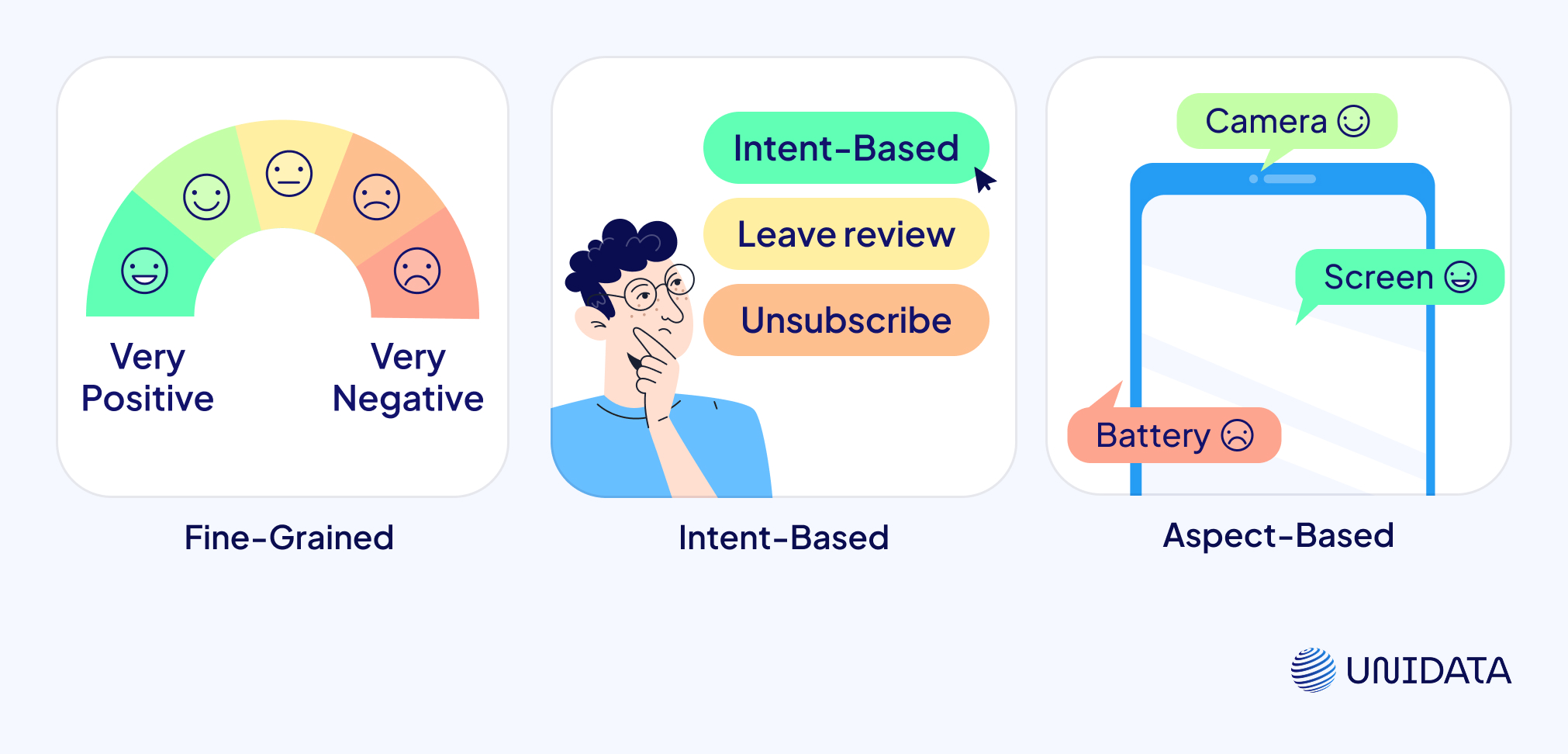
Fine-Grained Sentiment Analysis
This is where you move beyond basic categories. Instead of just positive, negative, or neutral, you break it down further — very positive, somewhat positive, neutral, somewhat negative, very negative.
Fine-grained models help when you need to understand not just what people feel, but how strongly they feel it.
Intent-Based Sentiment Analysis
Here the system looks for what the customer plans to do, not just how they feel. Are they happy enough to buy? Angry enough to leave a bad review? About to churn? Intent-based models usually combine sentiment signals with behavioral patterns to predict the next move.
Aspect-Based Sentiment Analysis
Instead of labeling an entire review as positive or negative, aspect-based models focus on specific parts. For example, a phone review might love the screen but hate the battery life. These models first detect the "aspect" (screen, battery) and then assign sentiment to each one separately. Transformers like BERT fine-tuned for aspect extraction are common here too.
Top Use Cases & Applications Across Industries
Sentiment analysis isn’t just tech hype anymore. It’s how companies stay smart, fast, and tuned in to what people really feel.
Retail and E-commerce
Brands scan reviews, chats, and feedback to spot what’s working — and what’s falling flat.
WatchShop, a UK online watch store, took this seriously. They used sentiment analysis to track how customers felt about their shopping experience. They spotted weak points on their product pages and made quick changes. As a result, they boosted their sales by 10%.
Social Media
Companies don’t just count likes anymore. They track the emotion behind every post, share, and comment.
When Nike launched their bold "Dream Crazy" campaign featuring Colin Kaepernick, they didn’t leave reactions to chance. They watched the public mood in real time using sentiment tools. Thanks to smart adjustments, they turned controversy into a huge win. Their online sales jumped by 31%.
Finance
Banks and traders keep a sharp eye on market moods through news, tweets, and forums. Positive buzz can signal a lift. Negative talk can be an early warning.
One Fortune 500 financial company took it a step further. They used call sentiment analysis to spot customer frustration during support calls. Problem calls were flagged automatically, leading to faster fixes and smoother service. This helped them get closer to building a truly customer-first brand.
Healthcare, travel, and gaming companies are also jumping in. Wherever emotions drive choices, sentiment analysis is making a real impact.
Challenges & Limitations in Practice
Sentiment analysis is smart, but human language is even sneakier. Here’s where even the best systems still get tripped up.
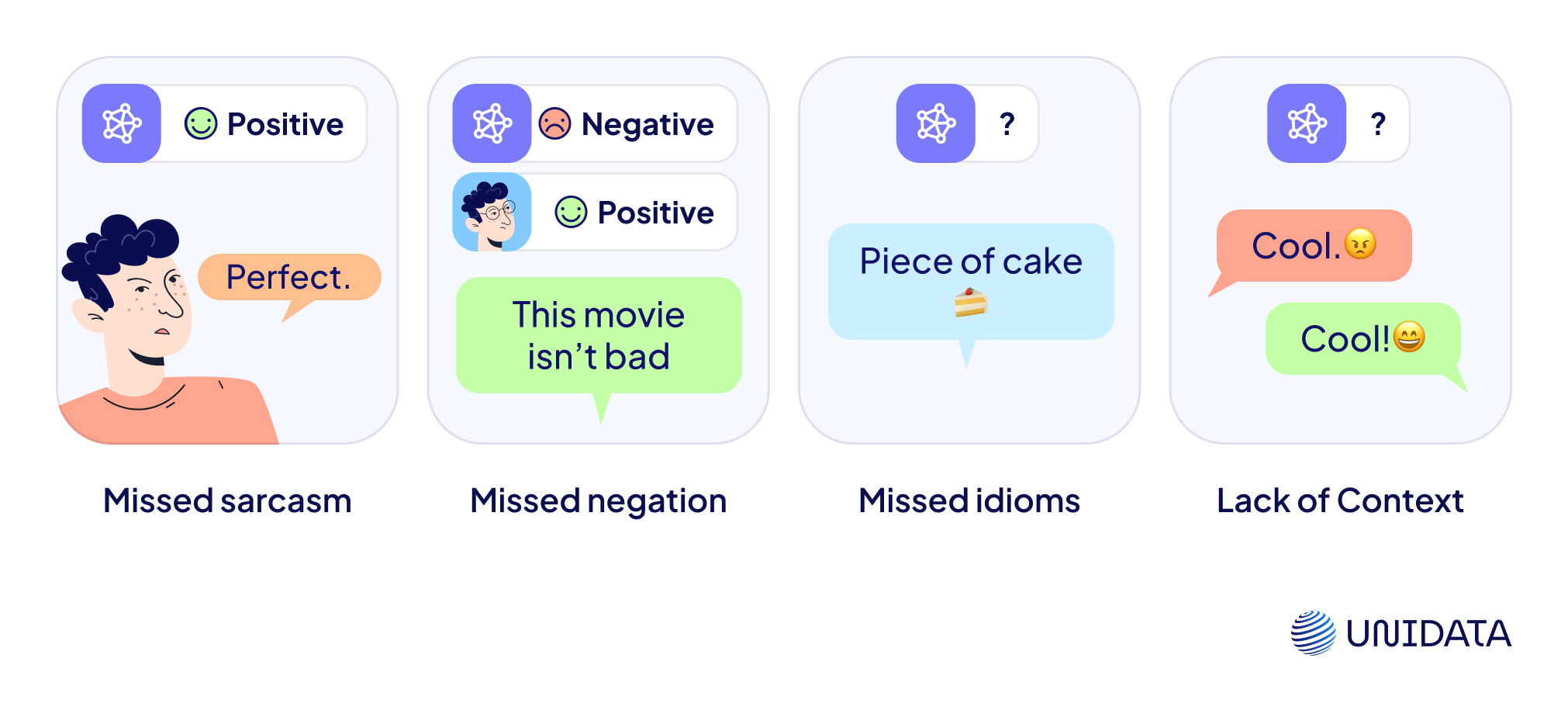
Sarcasm
Sarcasm is where people say one thing but mean the exact opposite — usually with a smirk. Like when someone tweets, "Oh perfect, another Monday morning meeting." They're not happy. They're dying inside. Most basic models catch the word "perfect" and stamp it positive, completely missing the eye-roll happening behind the screen. Even advanced systems need a lot of hints — tone, context, sometimes even emojis — to sniff out sarcasm correctly.
Negation
Negation flips the meaning of a sentence with just one small word. Take "This movie isn't bad." That’s actually a thumbs-up review, not a complaint. But simple models see "bad" and panic. Handling tiny words like "not" or "never" properly is make-or-break for good sentiment tools.
Idioms
Idioms are those weird phrases where the meaning has nothing to do with the words. Someone says, "That project was a piece of cake," and basic models think they’re hungry. Nope. They just mean it was easy. Unless systems learn to catch common sayings — and stay updated with new ones — they’ll keep getting lost.
Lack of Context
Words don’t mean much without the full story. Take "cool": if someone says, "This event was cool," they’re happy. If they text, "Cool. Forgot my laptop again," it’s pure frustration. Without understanding the bigger picture, even fancy AI can completely miss the emotional truth.
Sentiment vs. Semantic & Emotion Detection
Sentiment analysis, semantic analysis, and emotion detection often get tossed into the same basket—but they’re playing very different games. Knowing the difference saves you from using a hammer when you really need a scalpel.
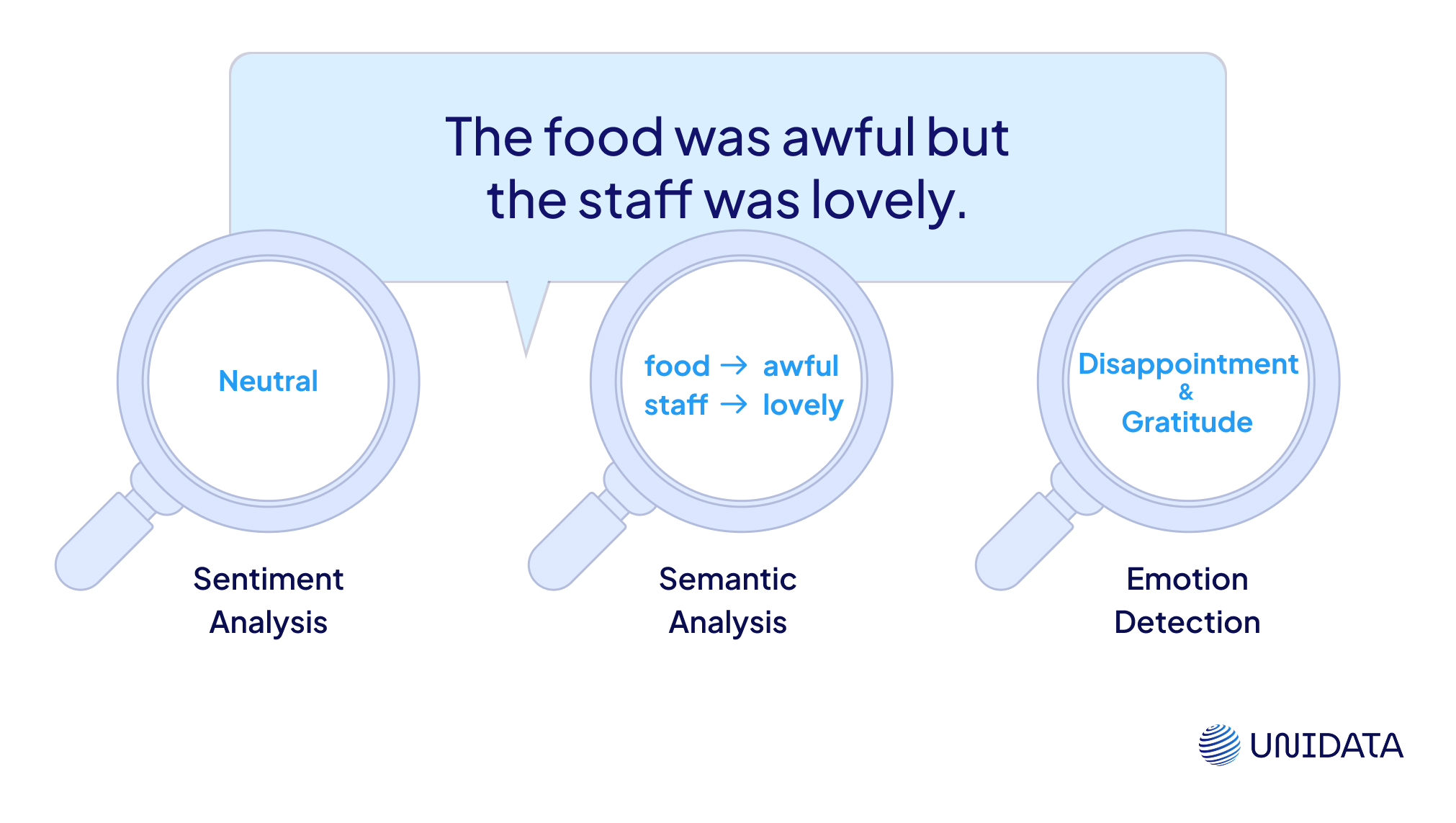
Sentiment analysis is the classic mood check. It tells you if the overall vibe is positive, negative, or neutral. That’s it. Quick and broad. If someone says, "The food was awful but the staff was lovely," sentiment analysis might just shrug and call it neutral. It gets you the headline but misses the details.
Semantic analysis cares less about emotions and more about meaning. It figures out what people are actually talking about, and how different parts relate. In that same restaurant review, semantic analysis would spot that "food" connects to negative words and "service" connects to positive ones. It separates topics and labels them clearly, instead of blending everything together into one big emotional soup.
Emotion detection goes even deeper. It tries to pull out the exact feelings behind the words: anger, joy, sadness, fear, surprise. It doesn’t just say "negative"; it tells you if the customer is disappointed, furious, or just mildly annoyed. Way more personal — but also way harder to get right, because humans are messy.
In short: sentiment tells you how people feel overall, semantic tells you what they’re feeling about, and emotion detection tells you exactly what flavor of emotion is cooking underneath.
Myth-Busters: Debunking Sentiment Analysis Misconceptions
Sentiment analysis has been hyped for years, but a lot of myths still float around. Let’s clear up the biggest ones before they trip you up.
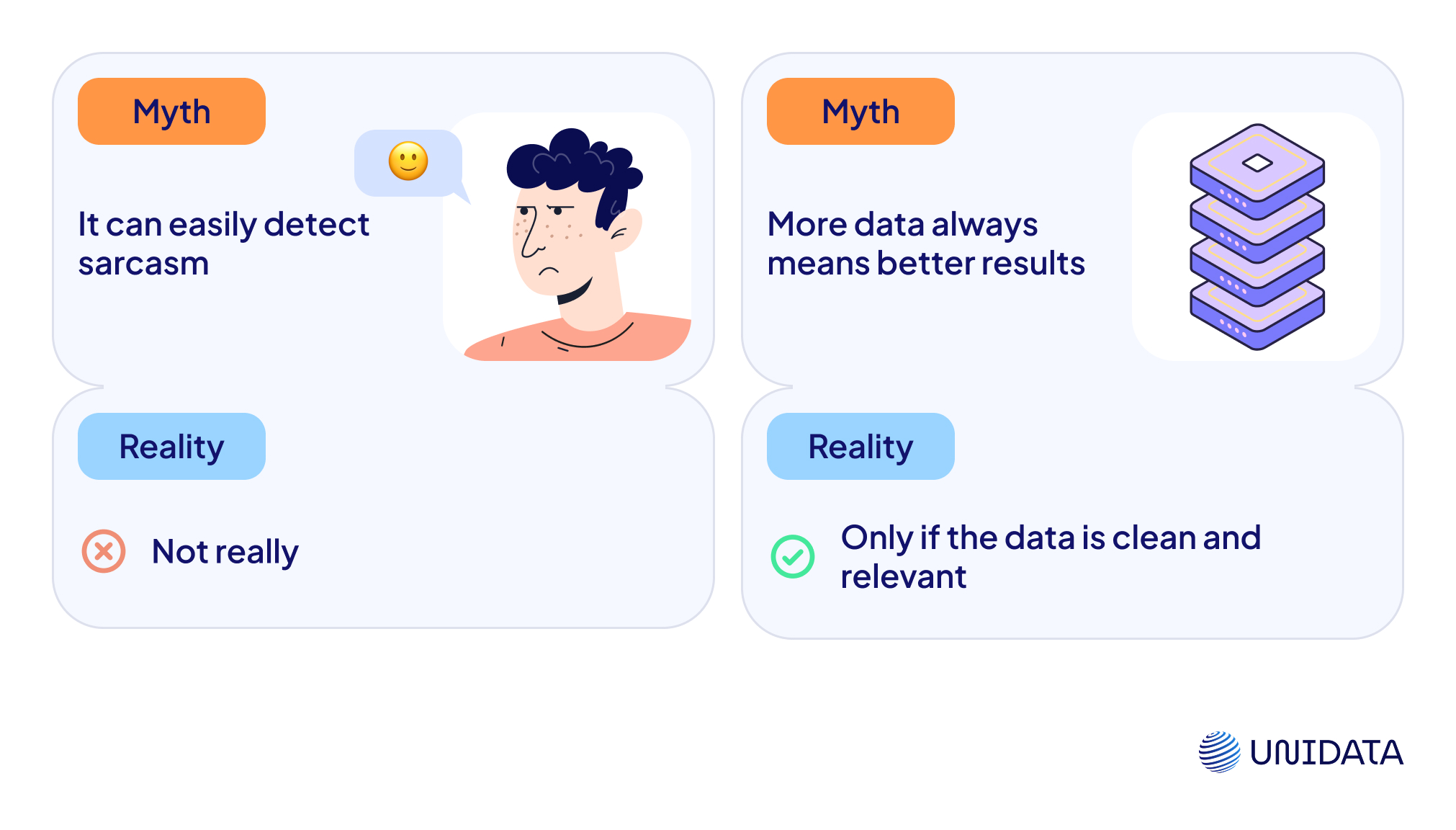
Myth 1: Sentiment analysis is just keyword spotting.
Wrong. Early systems just flagged words like "great" or "bad" and called it a day, but modern Transformer-based models are way smarter. They read context, tone, and structure. A simple "great" isn’t enough to fool a good model anymore — especially if it’s buried in sarcasm or double meanings.
Myth 2: It can easily detect sarcasm.
Not really. Sarcasm is still one of the trickiest things for AI to catch. Even humans miss it in text sometimes! Advanced systems can sniff it out better now, especially if they’ve been trained with sarcasm-heavy data, but it’s nowhere near perfect.
Myth 3: More data always means better results.
Big datasets help, but only if the data is clean and relevant. Feeding a model five million junky reviews full of typos, bots, and random noise won’t make it smarter — it’ll just confuse it faster. Quality beats quantity every time.
Myth 4: Sentiment analysis works the same across all industries.
Nope. People talk very differently in healthcare, finance, retail, or gaming. A model trained on restaurant reviews will fall flat if you throw legal documents or banking complaints at it. Good sentiment analysis always needs fine-tuning for the world it's living in.
The Role of Manual Annotation: Ensuring High-Quality Insights

Models need good data to get things right. But data doesn’t label itself. That’s why real people still have to tag reviews, posts, and chats by hand. They spot sarcasm, slang, and weird phrases that AI would miss.
Without human help, models make silly mistakes. They mix up jokes, miss anger, and treat "that’s sick" like someone needs a doctor. Bad labels mean bad results, no matter how good the model is.
Fresh, human-checked data keeps systems sharp. No shortcuts here.
Conclusion & FAQs: Next Steps for Implementing Sentiment Analysis
Sentiment analysis helps you turn text into real insights fast. It shows what customers feel, where problems start, and where trust grows. Whether you need a quick mood check or deep emotional tracking, there’s a tool for it.
Ready to put your data to work? Check out our data-processing services and start turning feedback into action.
